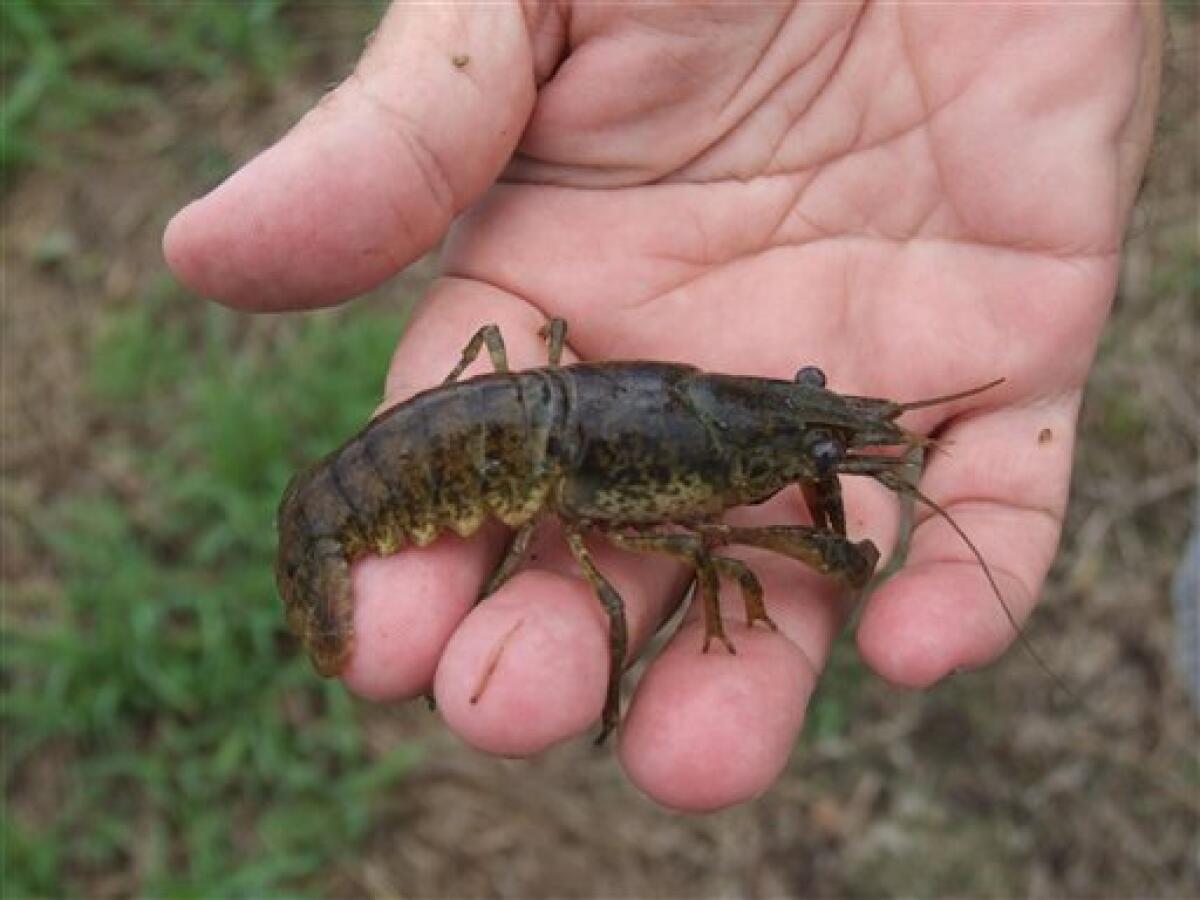Louisiana biologist sees future in shrimp crawfish

Way down South, where football and food are close to religions, tailgate parties could turn into crawfish boils a few autumns from now if a Louisiana State University project works out.
“I certainly hope so. It would be a nice option to have,” said Greg Lutz, an aquaculture specialist at the university’s agriculture center.
Lutz has placed about 2,000 juvenile shrimp crawfish into 60 outdoor tanks and is studying how they are growing and whether they could be raised profitably, like their distant kin, red swamp crawfish and white river crawfish. Those species are a staple of spring get-togethers in Louisiana and other areas of the South, but they’re gone before the first kickoff.
Shrimp crawfish, however, lay their eggs about the time the current commercial varieties are harvested and would be full-sized in October and November.
“I would like them so we could get part of the football season,” said David Snell, who runs a Dallas-area catering business called Cajun Crawfish Company. “All the tailgating that goes on, if we were able to get crawfish earlier, with a good size and at a reasonable price, I’d be interested.”
David McGraw, who buys from Atchafalaya Basin fishermen when his 700 acres of crawfish ponds near Natchitoches, La., aren’t producing, agreed there would be plenty of interest in a fall crop.
“We can sell them as long as we have live production,” said McGraw, whose Louisiana Crawfish Inc. ships live crawfish by air to customers from Alaska to the Caribbean. He wouldn’t say just how many pounds he sells a year. “It’s in the hundreds of thousands.”
The small-headed, small-clawed shrimp crawfish have another advantage over the other species. Although they’re not quite as big - growing to about 5 inches - their proportionally smaller heads and claws mean more of their weight is meat.
Louisiana farms raised 98 million pounds of crawfish last year, but up to 91 percent of that weight is shell and inedible innards.
People planning for a crawfish boil often figure on 5 pounds of crawfish per person. With shrimp crawfish, the higher percentage of meat might cut that to 4 pounds per person, Lutz said.
Not everyone is sold on the idea.
David Savoy, who has 1,700 acres of crawfish ponds near Church Point, La., said growing shrimp crawfish would require farmers to keep ponds full at the hottest time of year.
“It would be quite expensive if I had to be holding water now, because of evaporation rates. I can watch my water disappear daily,” he said.
Savoy also argued that crawfish are primarily a local product, with most sold in Louisiana, east Texas and Mississippi. And crawfish boils aren’t a weekly or monthly sort of party, he said.
“People boil them once or twice a year, and they’re done,” Savoy said.
But McGraw said the out-of-state market is increasing - in part, he thinks, because people displaced by hurricanes Katrina and Rita in 2005 introduced their new neighbors to crawfish boils.
“We strictly go to the domestic out-of-state and into Canada, Alaska, the Caribbean,” he said. “The product seems to keep growing each year even though we are in times that are not the best economically.”
Most commercial crawfish ponds are in Louisiana, but other states have gotten into the business. Louisiana’s 2009 farmed harvest was valued at $115 million, with a wild catch of about $9.4 million.
Louisiana had 173,078 acres on 1,119 farms last year, according to LSU’s agriculture center. Texas is a distant second, with about 20 producers working 1,500 acres. A 2005 U.S. Department of Agriculture census found a dozen other states with at least one crawfish farm.
Lutz said he first collected shrimp crawfish in 1986 and had wanted to evaluate the species ever since. Two summers ago, students checking red swamp crawfish populations in the Atchafalaya Basin brought him 40 shrimp crawfish, known to scientists as Orconectes lancifer.
Those 40 crawfish produced about 3,000 young - more than the research ponds could comfortably hold. Lutz is using his second generation of juveniles to study how many should be set out per square yard and what sorts of plants work best with them.
Lutz has been running traps every seven to 10 days to check growth. “They seem to be growing very well,” Lutz said. As with red swamp and white river crawfish, a few live two years, but most live about a year.
Like currently farmed crawfish, they’re expected to become a self-perpetuating crop, though raising them will be more difficult.
Red swamp and white river crawfish survive dry periods by burrowing into the mud. Shrimp crawfish don’t burrow. Farmers would need a way to keep their breeding stock over the winter, such as closing off a corner of a large pond as a winter pond.
“This is the real issue to work out for stock management,” Lutz said.
How long is it likely to take?
“If we could work everything out, it might be about three years. If we run into some problems, it still could happen in maybe five years. Or we might never work everything out.
“But we’re sure going to try.”
---
Online:
Louisiana Crawfish Farmers Association: https://www.crawfishfarmer.com/
LSU Agriculture Center info sheet: https://tinyurl.com/35ltmc6